On May 4, fans of the cult saga of George Lucas celebrate the day of “Star Wars”. This date is chosen because of the famous quote May the Force be with you, which many fans outplay as May the fourth be with you. On the occasion of this “Star Wars” day, the editors of The Universe Space Tech would like to tell some interesting facts about Mimas, a rather remarkable moon of Saturn, which is often compared to the Death Star because of its appearance.
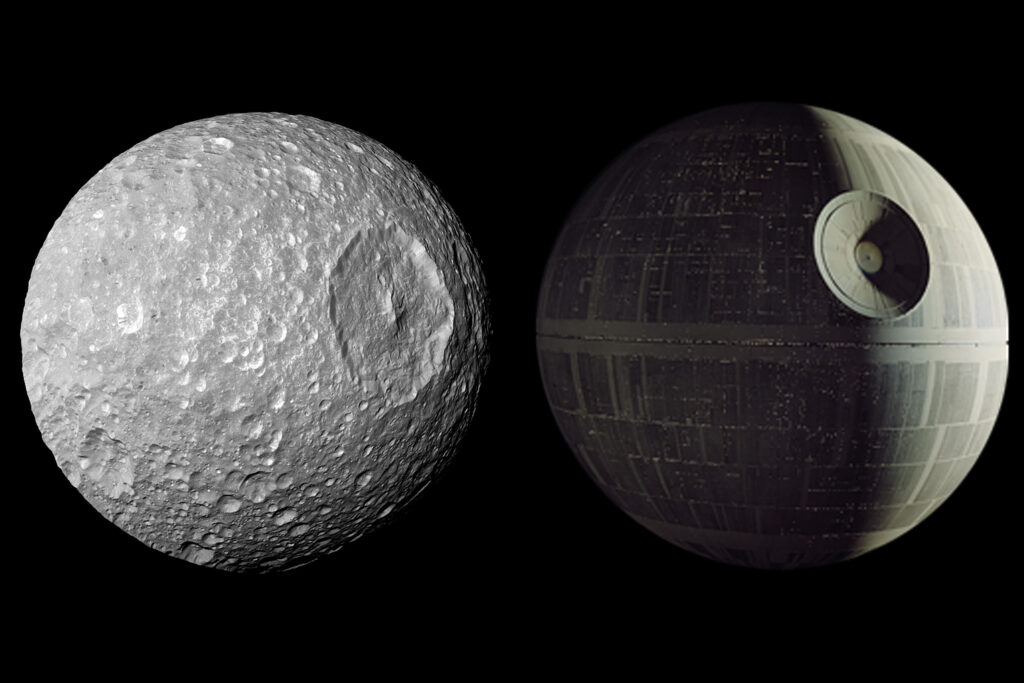
The seventh moon of Saturn
Mimas was discovered by astronomer William Herschel on September 17, 1789. It became the seventh moon of Saturn found.
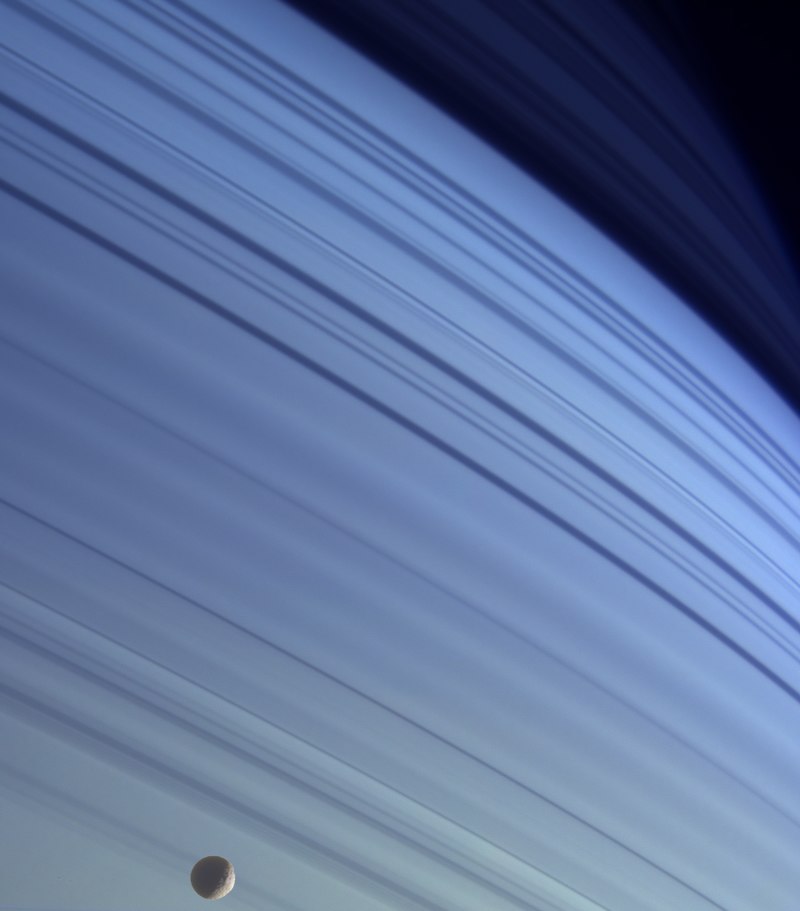
For the next two centuries, Mimas remained only a small point in the eyepieces of telescopes. Everything changed in the early 1980s after a pair of Voyager probes visited the Saturn system. They took photos of Mimas, which attracted the attention of even people with little interest in astronomy. It turned out that Mimas looks like the “Death Star” from the famous movie “Star Wars”.
Victim of Grand Collision
The 139-kilometer impact crater named after William Herschel is responsible for the visual similarity of Mimas with the Death Star. At the same time, the diameter of the moon is 396 km. How easy it is to calculate, the diameter of the funnel is more than a third of the diameter of the icy moon. A crater of a similar scale on Earth would have a diameter of over 4000 km (that is, it would be larger than Australia).
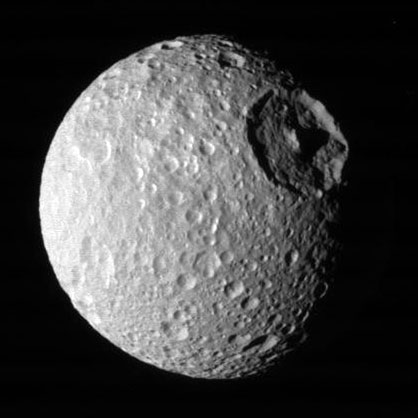
According to astronomers, the impact that led to the formation of the Herschel crater almost split Mimas. There are cracks on the opposite side of the moon, probably formed by shock waves passing through it.
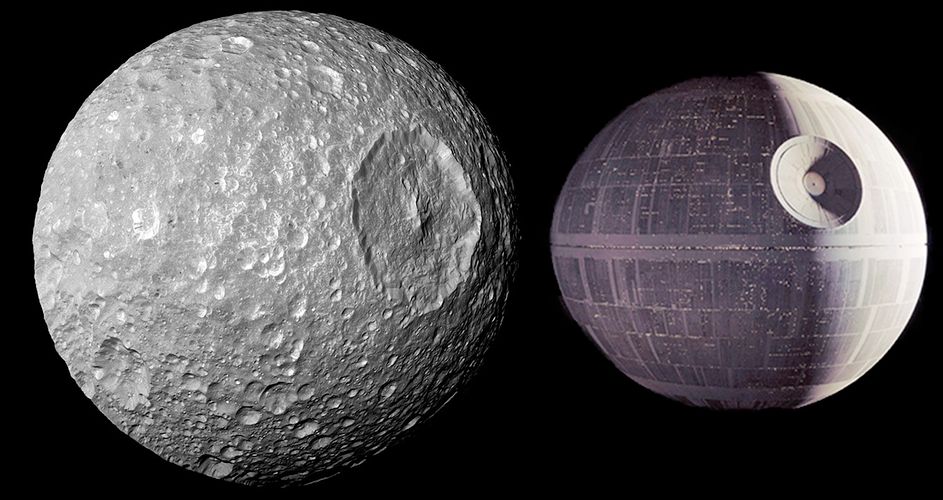
By the way, Mimas is bigger than the first, but smaller than the second Death Star. According to the canon of the Star Wars universe, their diameter was 120 and 800 km, respectively.
Tiny spherical body of the Solar System
Another interesting fact about Mimas is that it is the smallest known object of the Solar System, which has taken a spherical shape under the influence of its gravity. The surface area of the moon is only 500 thousand km2, which is comparable to the territory of Spain. Mimas occupies the twentieth place in the list of the largest moons of planets in the Solar System.
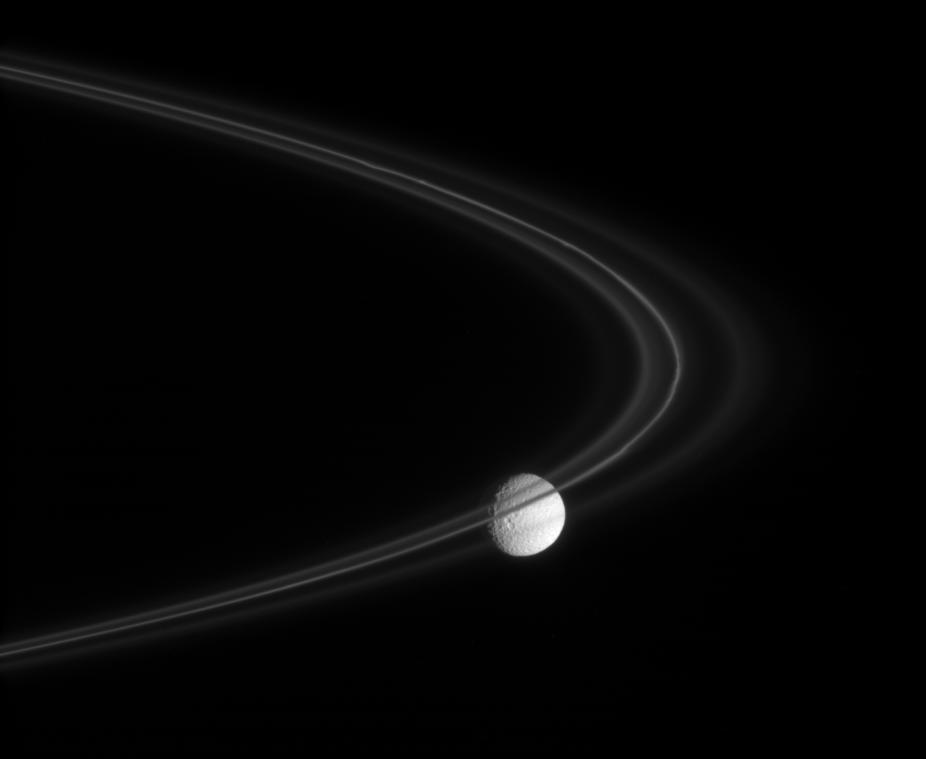
Moon – Pacman
In 2010, NASA published a temperature map of Mimas, created using the Cassini apparatus. The results surprised the researchers. It turned out that the hottest region of Mimas is not located on the equator of the moon, but is spread out at the edges. Thanks to its characteristic shape, which resembles an open mouth, Mimas quickly gained a new comparison — this time with Pacman, a character in a popular video game from the 1980s. And the fact that the Herschel crater is located right in the middle of the “mouth” like an edible dot from the game only intensified this effect.
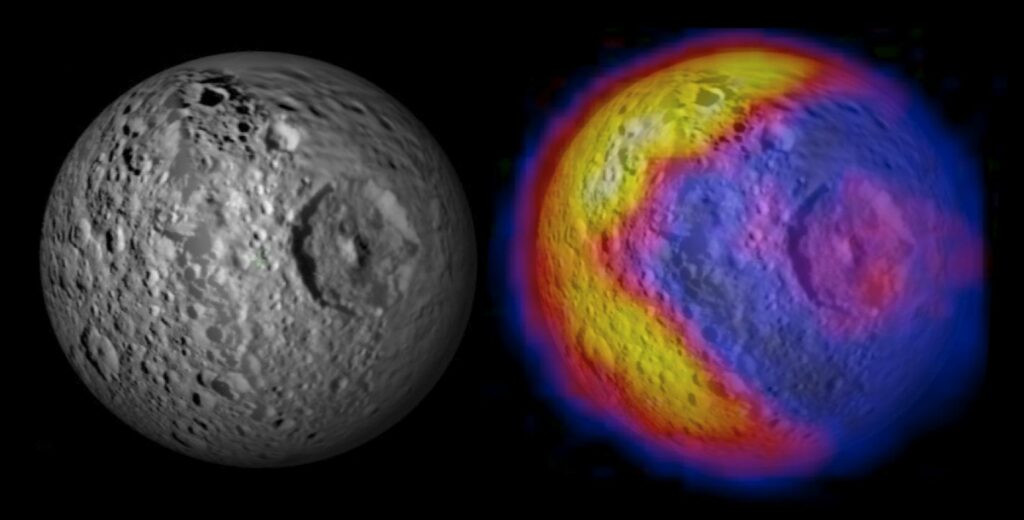
The Hidden Ocean of Mimas
Mimas is interesting not only for its appearance. Recently, a team of American astronomers announced the discovery of anomalous “rocking” of the moon. The computer model created by the researchers showed that such behavior can be explained if there is a layer of liquid water in the bowels of the body. It should be located at depths of 22-32 km below the surface of Mimas. Water does not freeze due to tidal heating caused by the gravitational influence of Saturn.
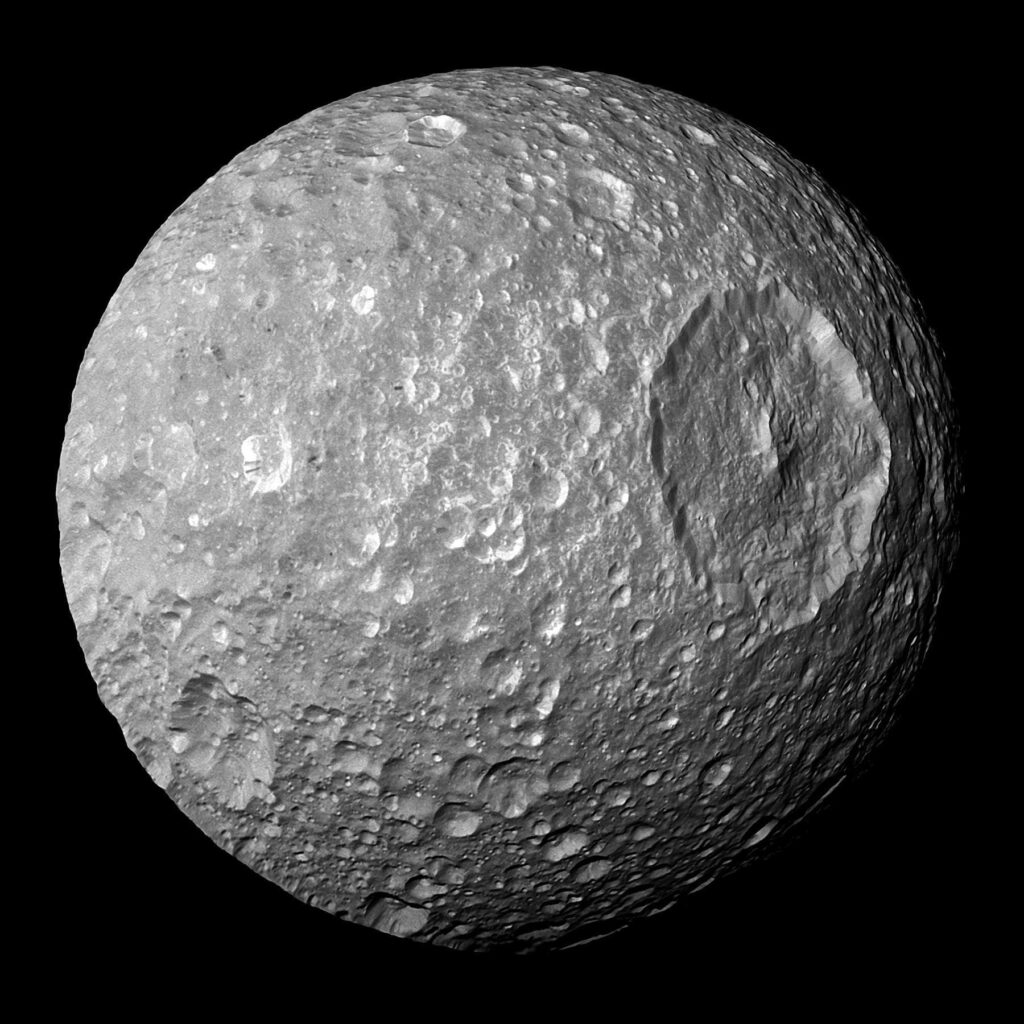
According to the researchers, if their conclusions are confirmed, Mimas will become the first representative of a completely new class of oceanic worlds that “hide” traces of existence in their depths of water from external observers. So, even if Mimas looks like a Death Star, it is possible that real life may lurk in its depths.
Follow us on Twitter to get the most interesting space news in time
https://twitter.com/ust_magazine
